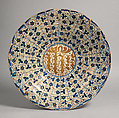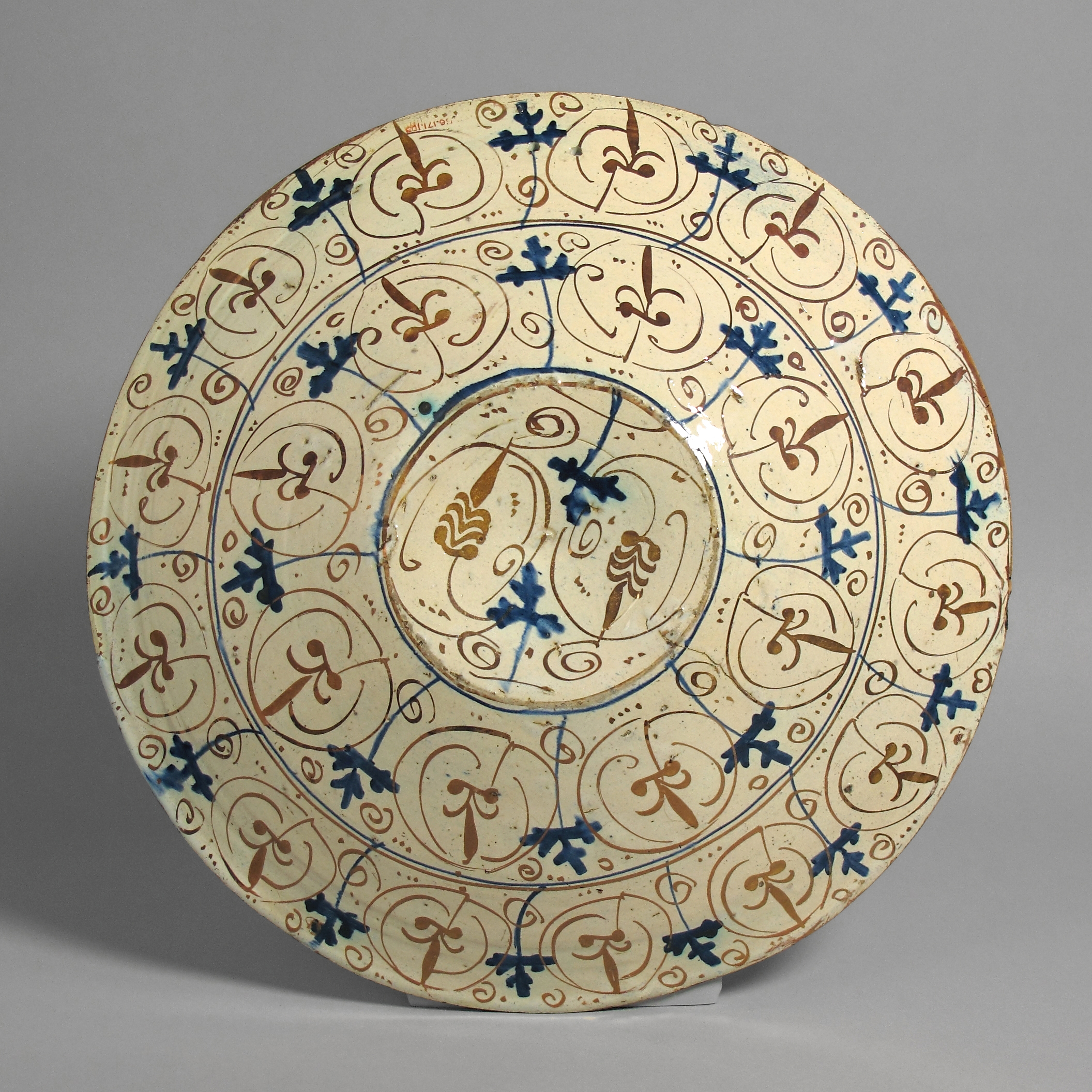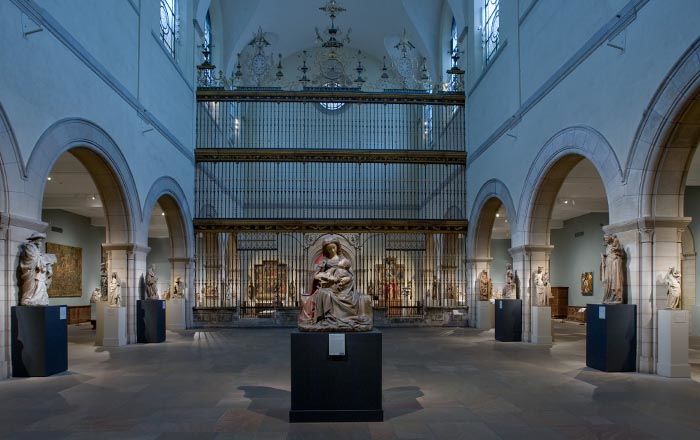Dish with IHS Monogram and Floral Pattern
Lusterware is the term used to describe a glazed earthenware ceramic decorated with an iridescent finish. The technique for creating this finish was developed in the ninth century under the rule of the Abbasid Caliphate in present-day Iraq. The medium involves a technique that is difficult to master, but if completed successfully, the surfaces of the ceramic objects display an iridescent sheen which is achieved through multiple firings and the application of a metal-based pigment (including silver, copper, tin, or a combination of these). Lusterware manufacture is still difficult to understand from a technical perspective because for generations, production was kept secret to protect workshop practices from being replicated by competitors. Therefore, pigment formulas and trade techniques were passed down from master to pupil and rarely recorded.
Knowledge of the technique for creating lusterware made its way to the Iberian Peninsula by the twelfth century, when most of the region was still under Islamic rule. By the 1400s, the Iberian center of lusterware production was in Manises, near the city of Valencia. Previously a Muslim taifa, or principality, the Kingdom of Valencia was conquered in the thirteenth century by James I for the Crown of Aragon, and it was here that Christians and Muslim potters worked, sometimes together, for a diverse clientele with a voracious appetite for high quality lustered wares.
The center of this dish is emblazoned with the sacred monogram IHS, an abbreviated form of the Greek spelling of Jesus’ name that served as a Christian symbol. These golden letters are surrounded by delicate bryony leaves and acacia flowers. The combination of the sacred monogram and blue and white concentric bryony and acacia ornamentation was popular in both Italy and Spain during the late fifteenth and early sixteenth centuries. Some scholars have speculated that the meaning behind this decorative pattern and its proliferation in the Iberian Peninsula in the mid-fifteenth century may be attributed, at least in part, to the preaching of the Franciscan Friar Mateo de Agrigento. Active in Valencia in the 1420s and widely considered a miracle worker by his contemporaries, Fray Mateo encouraged devotion to the sacred name of Christ and stamped IHS on various fabrics, which he would distribute among the faithful.
This image cannot be enlarged, viewed at full screen, or downloaded.
This artwork is meant to be viewed from right to left. Scroll left to view more.




